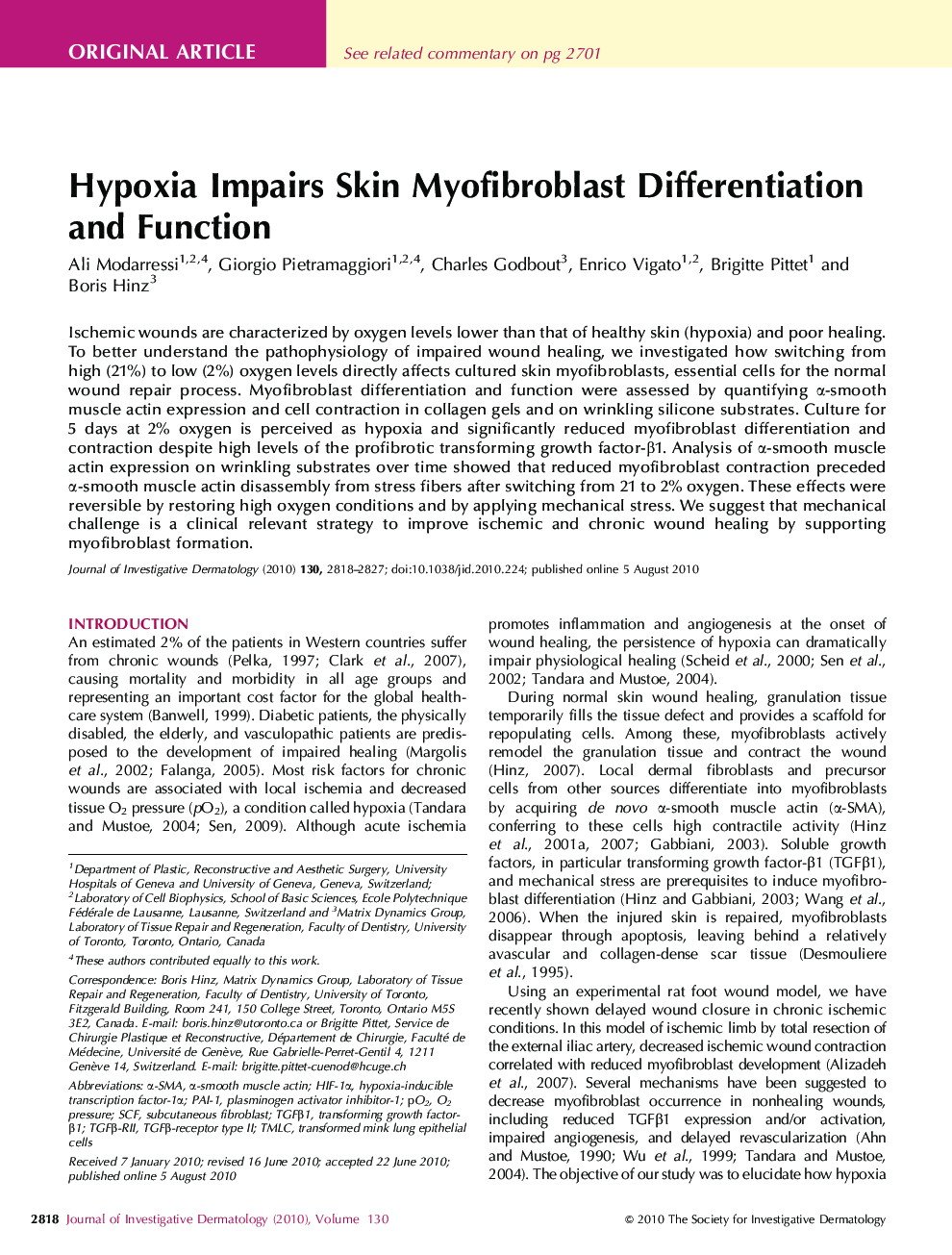| Article ID | Journal | Published Year | Pages | File Type |
|---|---|---|---|---|
| 3215819 | Journal of Investigative Dermatology | 2010 | 10 Pages |
Ischemic wounds are characterized by oxygen levels lower than that of healthy skin (hypoxia) and poor healing. To better understand the pathophysiology of impaired wound healing, we investigated how switching from high (21%) to low (2%) oxygen levels directly affects cultured skin myofibroblasts, essential cells for the normal wound repair process. Myofibroblast differentiation and function were assessed by quantifying α-smooth muscle actin expression and cell contraction in collagen gels and on wrinkling silicone substrates. Culture for 5 days at 2% oxygen is perceived as hypoxia and significantly reduced myofibroblast differentiation and contraction despite high levels of the profibrotic transforming growth factor-β1. Analysis of α-smooth muscle actin expression on wrinkling substrates over time showed that reduced myofibroblast contraction preceded α-smooth muscle actin disassembly from stress fibers after switching from 21 to 2% oxygen. These effects were reversible by restoring high oxygen conditions and by applying mechanical stress. We suggest that mechanical challenge is a clinical relevant strategy to improve ischemic and chronic wound healing by supporting myofibroblast formation.
